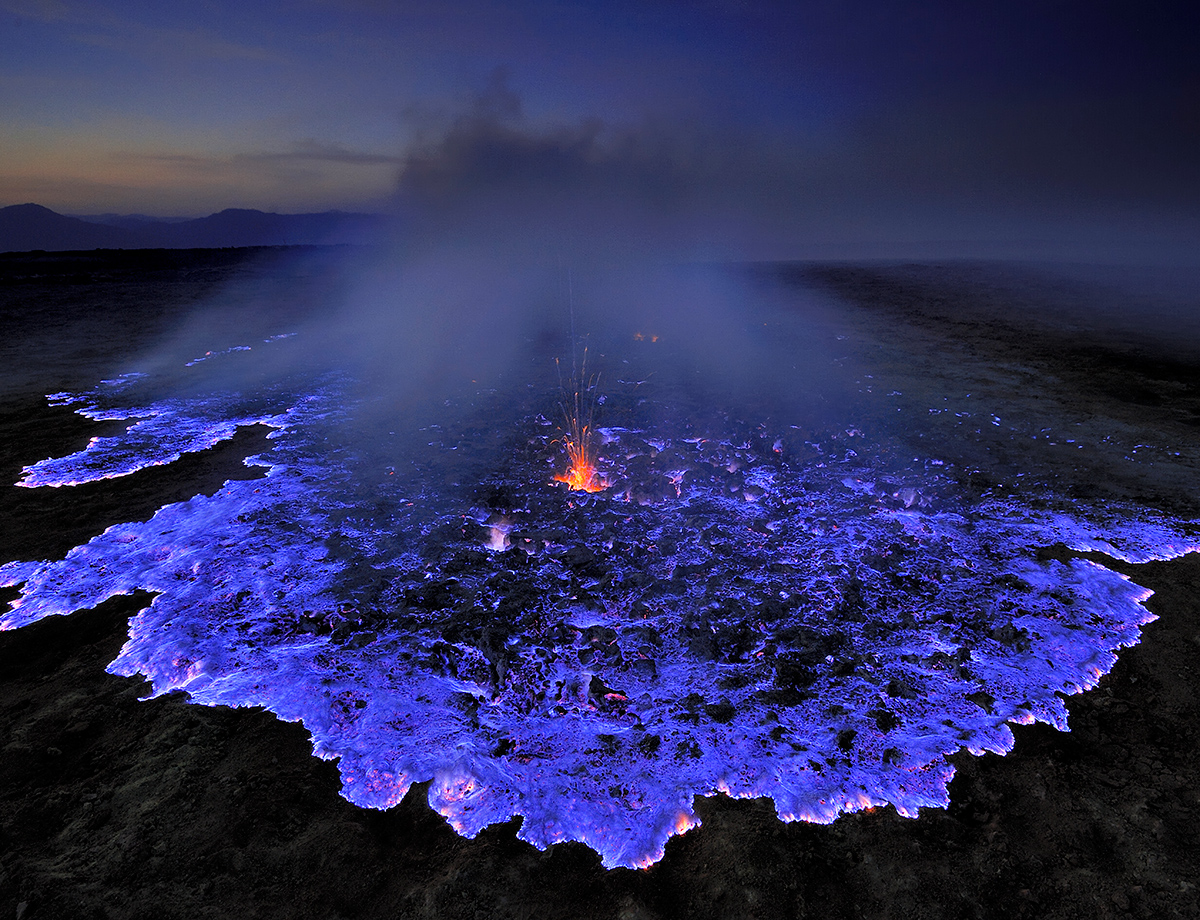New Scientists
IT’S a volcano, but not as we know it. This cerulean eruption takes place in the Danakil Depression, a low-lying plain in Ethiopia. The volcano’s lava is the usual orange-red – the blue comes from flames produced when escaping sulphuric gases burn.
French photographer Olivier Grunewald creates such images without using colour filters or digital enhancement, which is no simple task. To get this shot he had to wait until dusk, when the electric blue flames were visible, but before all the daylight had ebbed away. Then the wind had to be blowing away from him so he could get close enough. Photographing the similarly sulphurous Kawah Ijen volcano in Indonesia, where he worked inside the crater, was even more treacherous. “We have to take care when the winds push the flames close to us,” he says. “In Danakil it is easier to escape as the land is flat.”
Grunewald works in a gas mask to avoid breathing in the deadly fumes – but photographing Kawah Ijen still left him with peeling skin and clothes smelling of rotten eggs for weeks afterwards.
Another drawback of Grunewald’s subject matter is that the acidic gases don’t agree with his cameras. But it’s worth it, he says. “The phenomenon is so uncommon – we really feel like we are on another planet.”
